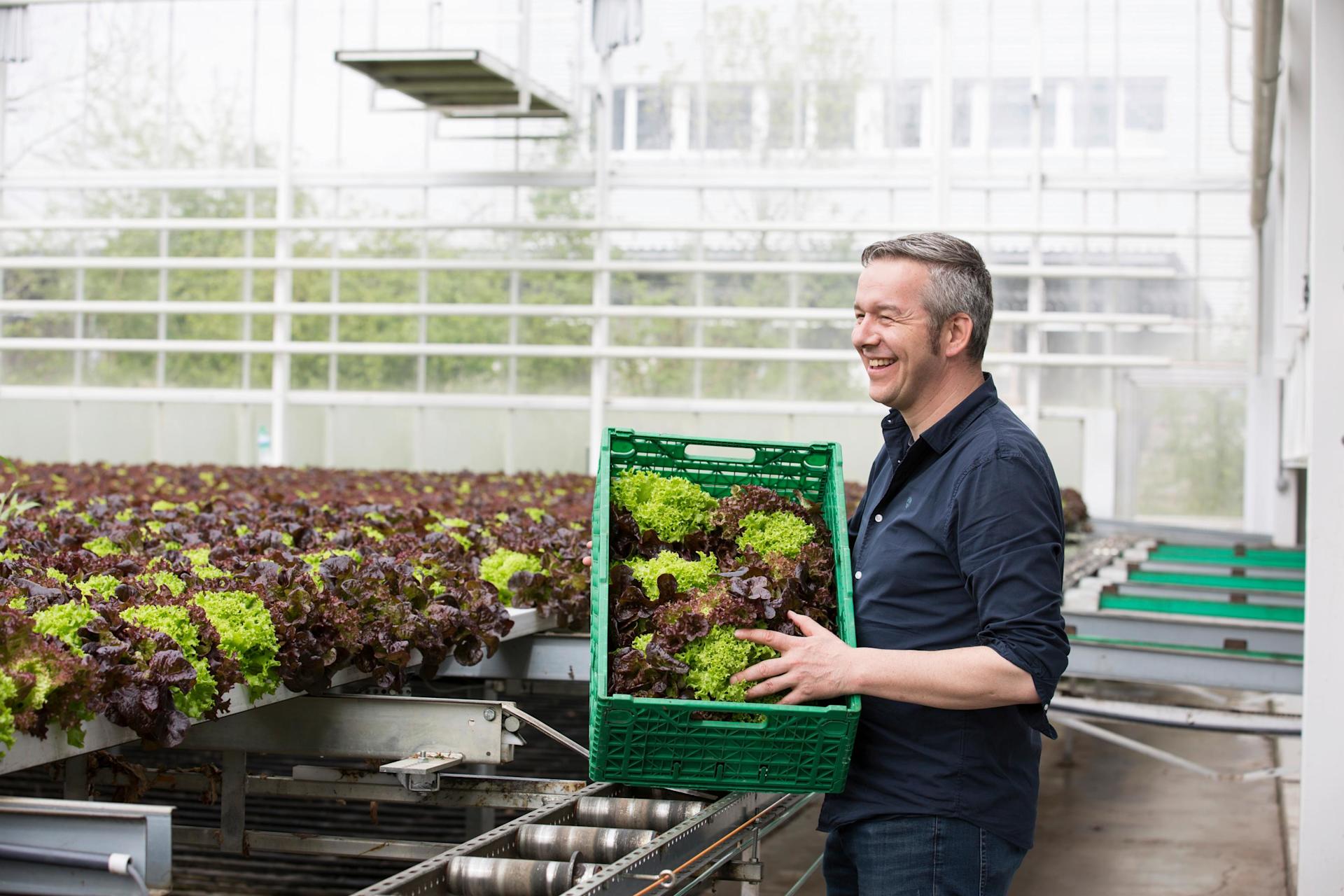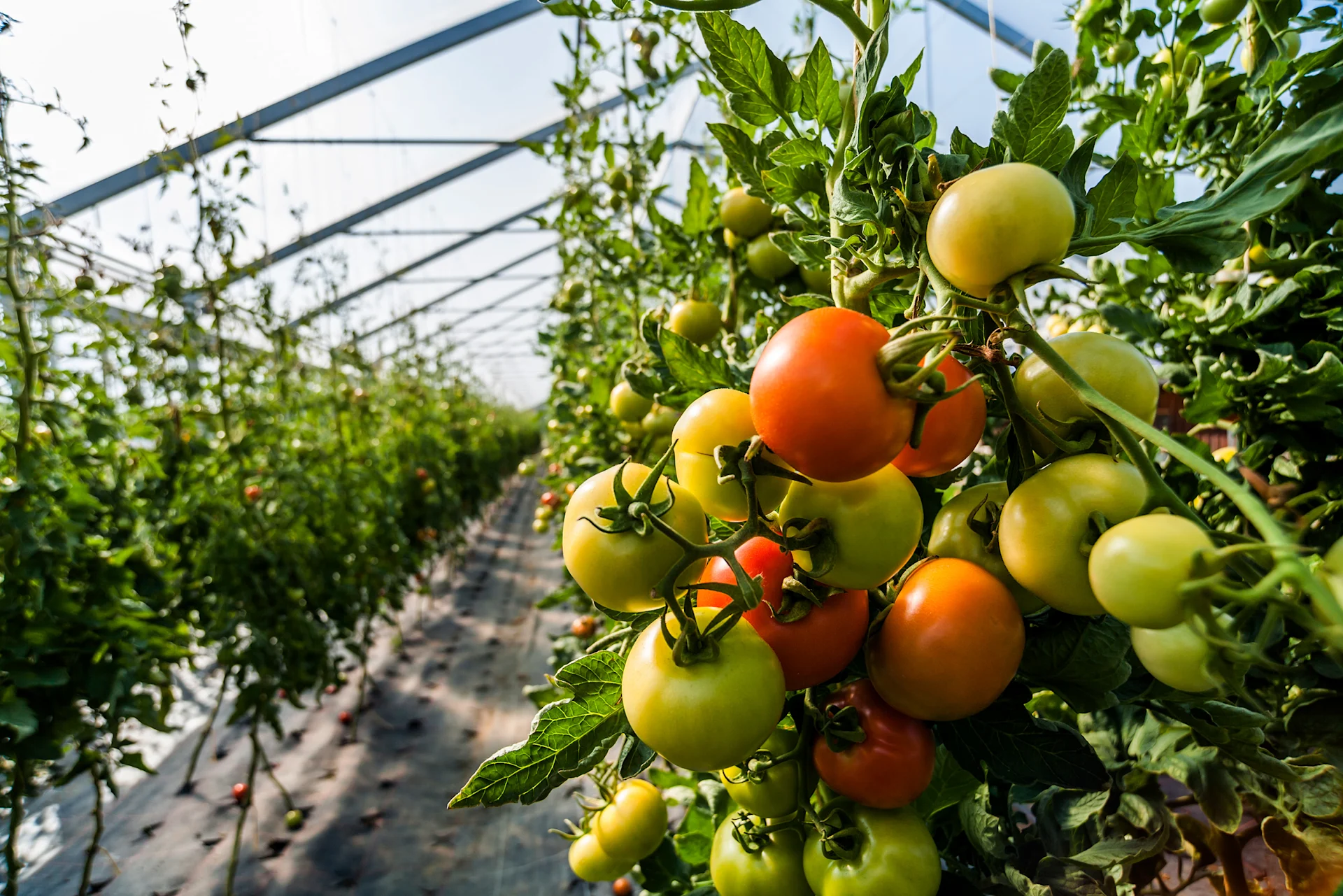
Food waste
Saving food and helping people
A visit to "Tischlein deck dich": members of the FMC Executive Board support the team on site.
navigation

Climate & energy
We already pay attention to climate protection when growing our vegetables and fruits. Migros is promoting a rapid move to heating greenhouses without the use of fossil fuels.
We all take it for granted: juicy fruit and fresh vegetables on the shelves all year round. But many plants originally come from other climatic zones and like it warm to grow. That is why part of the harvest, especially in the cold winter months, comes from Spain, for example – or from a heated greenhouse in this country.
Many greenhouses are heated with fossil fuels such as oil or natural gas. Large quantities of climate-damaging CO2 are emitted in the process.
But it doesn’t have to be that way: we support sustainable cultivation, like that of vegetable farmer Patrick Forster. He runs a hydro-greenhouse that provides us with lettuce all year round – in a climate-friendly way. Because the greenhouse is heated without fossil fuels. Waste heat from the waste incineration plant directly adjacent to the site heats the air in the greenhouse. In close cooperation with our producers, we are in this way taking a big step together towards a climate-friendly future.
Green approaches aren't always green enough for us. From 2026 onwards, we will give preference to fruit and vegetables grown in greenhouses heated without fossil fuels. This will help to protect the climate.
In the coming years, all greenhouse enterprises that supply us are to switch to renewable heating systems. Because the potential to reduce CO₂ emissions by not using fossil fuels in greenhouses is huge.
Greens from the greenhouse or from southern climes? Take a tomato, for example. It’s Switzerland’s most popular vegetable. Each of us eats around 10 kg a year. Yet the tomato, when it lands on our plates in winter, doesn’t have a good carbon footprint at all.

Sun-ripened winter tomatoes from Spain, for example, contribute 0.5 kg of CO2 per kilogram – because of the transport. However, 1 kg of tomatoes from fossil-fuel heated Swiss greenhouses consumes far more energy, namely around 5 kg of CO2 and thus 10 times as much. Only in the height of summer, when the red vegetables ripen unheated in our country, is the climate balance of Swiss tomatoes better. What applies to the tomato also applies to other vegetables and fruits.
Published 14.06.2023, revised 14.01.2025
Discover exciting stories about all aspects of Migros, our commitment and the people behind it. We also provide practical advice for everyday life.